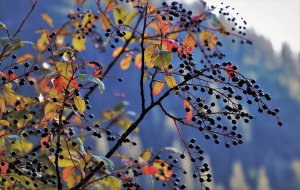Four Steps for Fall Tree and Shrub Care
Our hot, dry summers can be hard on ornamental trees and shrubs, rendering them weak as they head into winter conditions that can be even more challenging. Here’s our four-part plan for easing their transition.
Fall is a good time to prune certain trees and shrubs because their structures are clearly visible after leaves have fallen. Branches that are dead, broken or otherwise damaged, or interfering with other branches should be removed.
1. Pruning – If you look for fall pruning advice on the Internet, it won’t take you long to discover that the subject is controversial in some circles. The basic idea to bear in mind is that the best time to prune a plant depends on what kind of plant it is. If you’re at all unsure, do some research or consult a professional.

2. Watering – Extended periods of extreme heat are bad for trees and shrubs for obvious reasons, but dehydration is not the only relevant concern. Even trees that were watered during the summer months may have been weakened to the point that they’re more susceptible to pests and diseases and more vulnerable to harsh winter conditions. It’s important to continue to water as usual through the fall, until the ground starts to freeze.
3. Mulching – It’s also helpful to replenish mulch around this time, to keep moisture in the soil and provide root systems with some extra warmth. It’s important to keep the mulch circle from touching stems or trunks. Moisture trapped where the base of the plant meets the earth can cause rot and disease.
4. Inspecting – As we noted above, the transition to fall may reveal opportunistic insects, fungi, and other threats taking advantage of heat-weakened plants. If either color changes or patterns of defoliation seem early or uneven, you may have a problem that requires professional intervention.
As we focus on preventative care for southern landscapes, it’s important to remember that fall’s cooling air and soil make it the perfect time to plant new balled-and-burlapped trees and shrubs. (New additions with bare roots should be planted later, when they have become completely dormant.)
These steps will help your ornamental trees and shrubs stay healthy throughout the fall and into the winter, greatly increasing the chances of strong, healthy new growth when spring returns. Combined with regular lawn care treatments, your landscape will thrive throughout the fall season.



